The second hall in Stu Owen’s retrospective of the LCGB.
The LCGB marked the tenth anniversary of its resurrection in 1987. During that time the club had gone through many difficult periods and many committee changes, yet despite all the setbacks it somehow survived. The reality though, was that the club hadn’t grown much over that decade, membership was still low and more alarmingly so were club funds. The one thing which did help the LCGB at this time though was a hard core of members, and that was enough to ensure survival for the time being. However, this alone wouldn’t be enough to secure the club’s future…
Taking control
Though there were encouraging signs in 1987 with membership increasing, the club still needed sorting out at committee level. With several of the committee members being still involved with both the LCGB and the NRC it was holding things back, even if no one would admit it.
A large rally was to be held at Mike Karslake’s LPS (Lambretta Preservation Society) museum in Devon during September, to celebrate the 40th anniversary of the Lambretta. Unfortunately due to the club still being connected to the nationals a clash of dates meant they couldn’t officially be involved. The event was a huge success and showed what a good venue the museum was for future rallies.
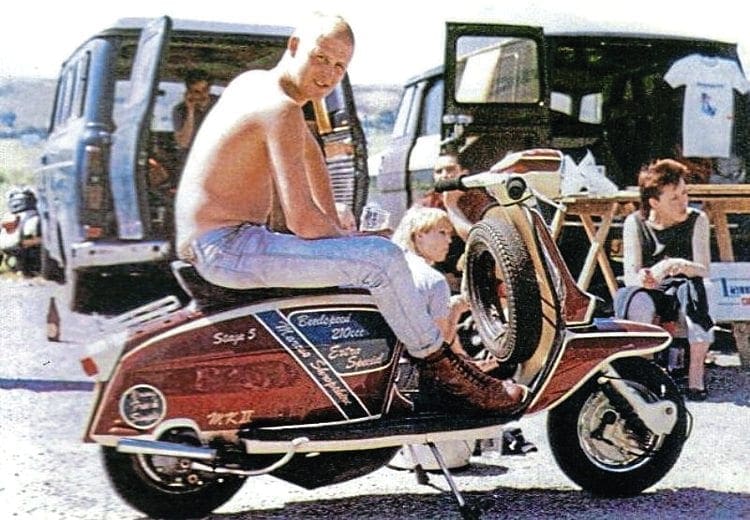
There was no doubt that the club’s reduced involvement in the 40th anniversary celebrations was a pivotal point to the changes which were about to happen. Richard Dawson would now leave the committee due to lack of free time. While this would be a blow, as his contributions were important, it would not be the biggest resignation. Jeff Smith would leave in early 1988 to concentrate on his new venture, the National Scooter Riders Association (NSRA). This would in effect take over from the NRC and thus cut all the ties the LCGB had with the nationals. With two key members of the committee gone this would primarily now leave Kevin Walsh in charge, and with none of the committee now involved in any other organisation the LCGB was finally free from outside intervention. Kevin Walsh could now delegate to all the committee and concentrate 100% wholly on the club and its members.

Members’ rallies would continue to grow stronger with the Moore Arms in Shropshire and Tan Hill in North Yorkshire being the mainstay. Though the venues were good the facilities were basic to say the least. Quite often the only place to wash was the corner sink in the pub toilets, while catering-wise you might get a bag of crisps behind the bar if you were lucky. This didn’t seem to matter though as there was such a strong camaraderie at member’s rallies. Both the committee and members would continually look for new venues sometimes in the most remote of places.
John O’Groats to Land’s End
During the summer of 1988 Kevin Walsh and Neil Wightman had the idea of a charity fund-raising event by travelling from John O’Groats to Land’s End by Lambretta. This idea was soon galvanised by members and in total 29 took part. While today this journey has been completed many times on a Lambretta back then the idea was relatively new. With over £3000 raised for charity it proved to be a huge success. The event, which was held in September of that year, would culminate with the 35th anniversary of the LCGB which was held at the LPS museum. There was no doubt in anyone’s mind both events had been a great success. With a huge turnout it showed what the club could achieve as it looked forward to bigger and better things in the future.
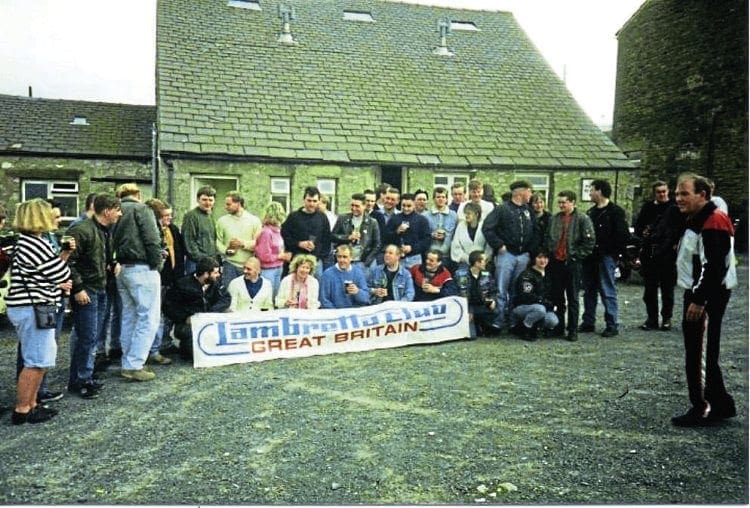
Euro Lambretta
While the LCGB were beginning to move in the right direction things were also evolving elsewhere which would have a big influence on the club. During the summer of 1988, led by Vittorio Tessera and Tino Sacchi, Lambretta Club D’Italia was rejuvenated. For years the Lambretta had been ignored in its home country with just a few enthusiasts showing an interest. With Vittorio’s connection to the Innocenti family enabling him to start a small museum at his home in Rodano, interest in the Lambretta rapidly started to grow.

Within a few months membership of the LCI soon began to swell. Shortly afterwards they announced plans for the first Euro Lambretta. The idea was to hold a rally once a year, each time in a different country, uniting all the European Lambretta clubs. Though most clubs in Europe had a national Lambretta club none were as big in numbers as the LCGB.
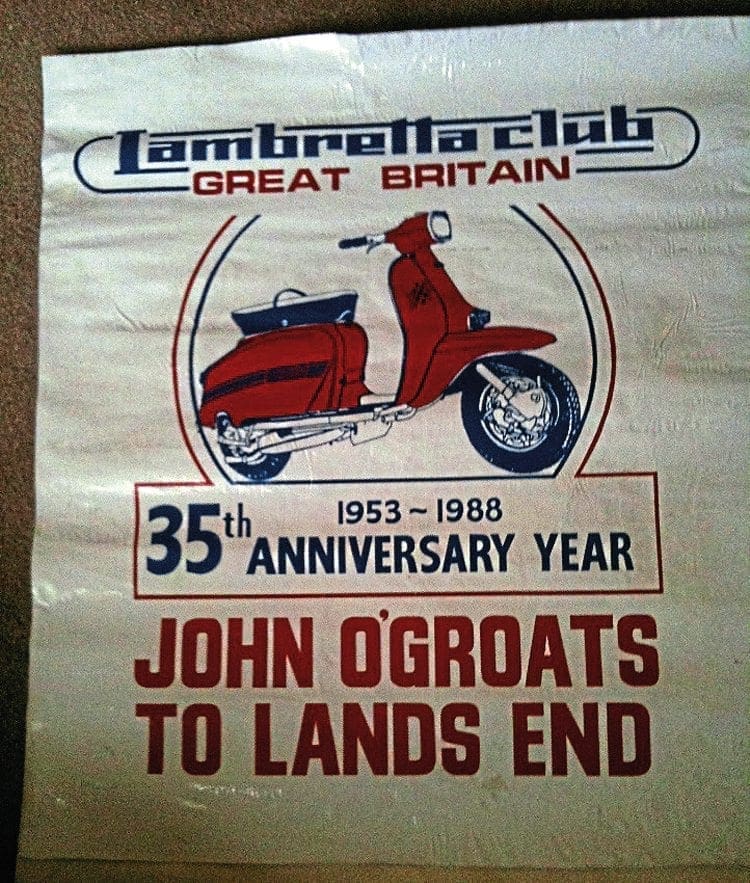
The first Euro Lambretta was to be held in Strasbourg in the summer of 1989 and was to be run once every two years. The idea was popular with LCGB members and soon became oversubscribed for the allocation given. With strict rules of ‘no ticket, no entry’ many members were left disappointed, many announcing they would turn up regardless. With British football fans not having the best reputation travelling abroad at the time the LCI were worried the LCGB members were of the same ilk. All sorts of rumours were being bandied about that there would be trouble at the event but this all proved to be wrong.

The event itself was a bit of a washout due to the horrendous rain on the journey there and over the weekend itself. With the format being new it was rather a strange affair. For the first time Lambretta enthusiasts from different countries attempted to integrate. However it was agreed that Euro Lambretta had worked and that the next one would be held in Holland in 1991.
Moving on
With all the attention Euro Lambretta attracted in the scootering press, the LCGB benefited as a result. Membership continued to grow as did the events. Members’ rallies became even more popular, likewise the LCGB super custom show, the idea created by Kevin Walsh himself. There was still a fine balancing act financially to be sorted, as though there was more income coming in… there was more going out also.
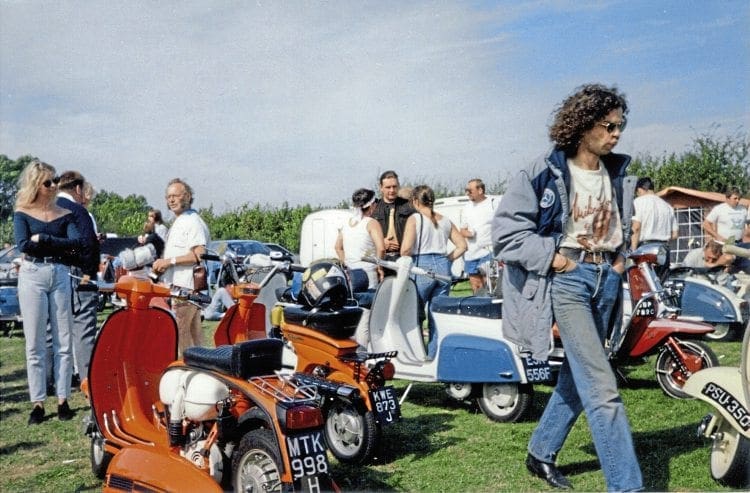
With no Euro Lambretta in 1990 the LCI put on their own event which when announced attracted the interest of the majority of club members. However this popularity soon dissipated, the final result being a total of seven members officially representing the LCGB. Mike Karslake himself would attend the event by car and this would mark his first return to the Innocenti factory since the 1960s.
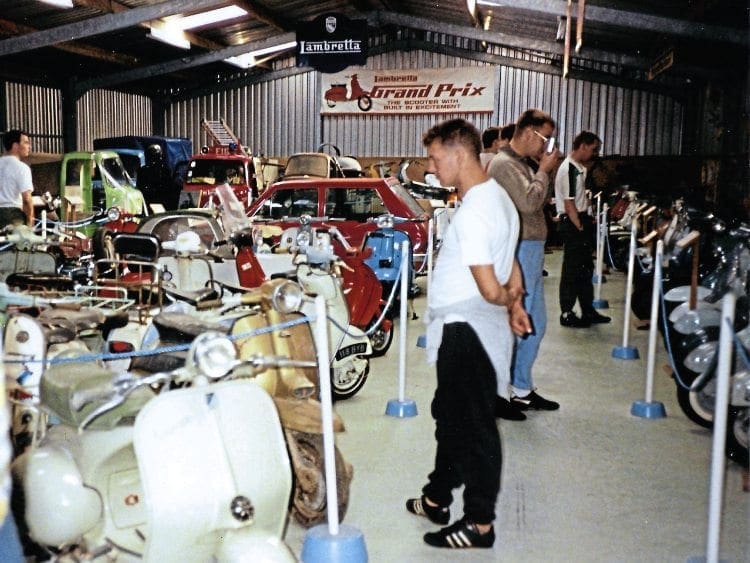
It had been decided that Euro Lambretta would be held every year instead of every two years. With Holland already announced for 1991 it came as great news that England would hold the event in 1992. Plans were soon under way to make it special and set the benchmark for future Euro Lambretta events. The ideal location was the LPS museum; it soon had the full approval of Mike Karslake.
Tragedy
Following on from his return to Italy in the summer of 1990, Mike Karslake embarked on a charity ride across the UK three months later. In fact it was to be a journey from John O’Groats to Land’s End in his famous Lambretta fire engine. This would be exhausting to the fittest of us but Mike who had been suffering from poor health would find it more gruelling. Sadly he died on November 1, 1990. There was no doubt that Mike had been the biggest personality in the Lambretta world for decades and a great inspiration to many, he would be sorely missed.
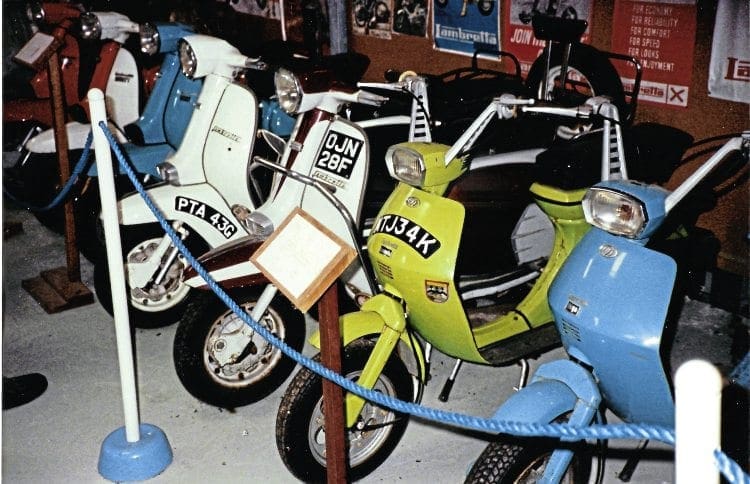
Rachel Karslake announced that the museum would continue operating, as would any planned rallies there, including the Euro Lambretta in 1992. It was a sad time for all involved in the LCGB but things had to continue. Mike would have wanted the club to succeed.
Loss of direction
In many ways 1991 was a bit of a subdued year. The club had lost its shining light with the passing of Mike Karslake and though the museum would continue it wasn’t quite the same without him. The Euro Lambretta in Holland was a bit of a strange event. It was held in Den Haag close to Rotterdam and Amsterdam.
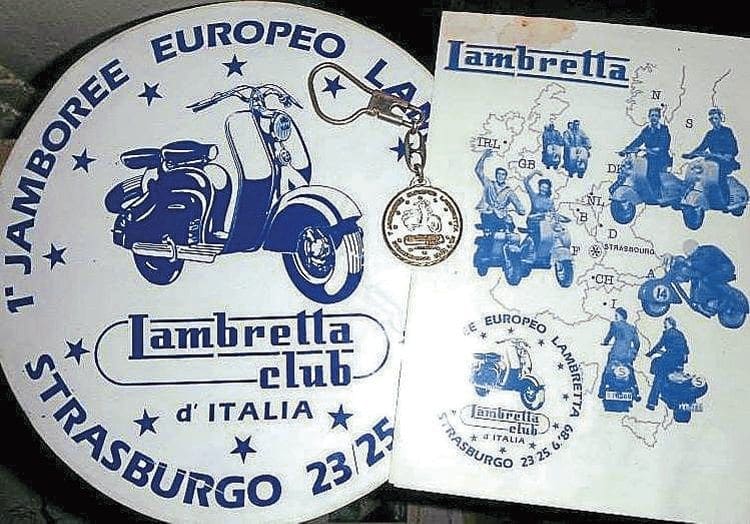
The rally was only an hour’s ride from the ferry port so was hardly a challenge. In fact the longest journey for most was the ride to the ferry port in Hull. The rally itself was held on a campsite next to a deserted beach due to it been a dumping ground for chemical waste by the look of what had been washed up. It lacked atmosphere and in reality was a poor location to hold this type of event. At the 1991 AGM it was announced the club had lost money that year mainly due to poor attendances at events.

There was also a feeling that some committee members were not pulling their weight. The meeting was bad tempered to say the least and resulted in several committee changes. This was seen as a positive move by most members and again showed that a reshuffle at the top is sometimes needed to move forward.
If Carlsberg did Euro Lambretta
With the Euro Lambretta being held in England, 1992 would be the club’s biggest year since its resurrection a quarter of a century earlier. This was to be the LCGB’s chance to show the rest of the world how things were done. Held at the LPS museum it was to be by far the biggest to date. Tickets for LCGB members had been restricted to 200-300 at the previous Euro Lambretta but would be dramatically increased as demand was expected to be high.

The event would last for four days and run like clockwork right from the outset. From the several hundred that did the ride out, custom show, gymkhana, open museum, to the perfectly executed sit down meal it was a huge success. Extra events on the final day including a sporting trial, hill climb and grass track racing, the wish of Mike Karslake at a meeting before he passed away, made a fitting finish. It proved that the LCGB could not only plan and organise such a large event but could deliver it as well. There was no doubt that the feelgood factor was returning to the club once and for all.
The future
By the end of 1992 membership stood at around 1000, the highest figure the club had ever achieved to date. With membership fees still cheap at just £10 per year it still offered great value for money. With more funds coming in the club finally had the chance to become financially secure while at the same time it could also reinvest money to improve things at every level.
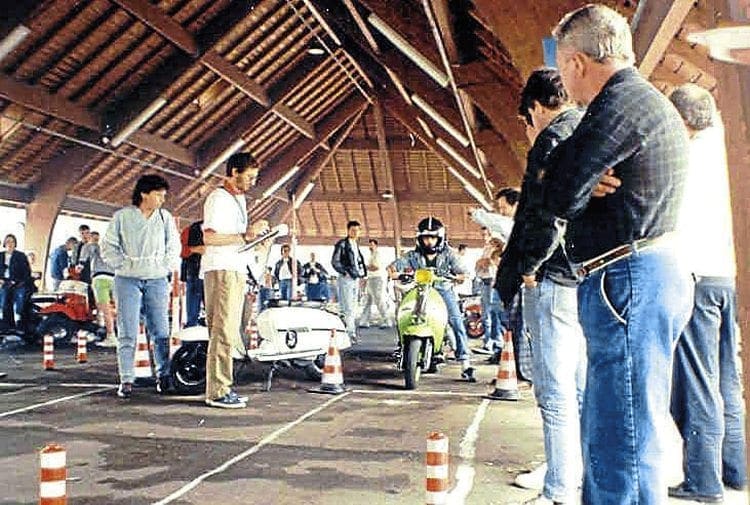
Within the same year things had dramatically started to change around Lambretta ownership in Britain. Firstly the popularity of the nationals had an impact and people who were previously disillusioned with the scene returned. Secondly with the European trade borders becoming far more relaxed it was much easier to import a Lambretta from Italy. Up to that point it had been an extremely difficult process but from now on it was a free market. With an abundance of cheap and pristine condition examples in Italy hundreds if not thousands would begin to flood British shores. This would mean a large increase in new Lambretta owners who would potentially want to join their official club. For the LCGB this would mean a dramatic increase in membership and more important security for the future.
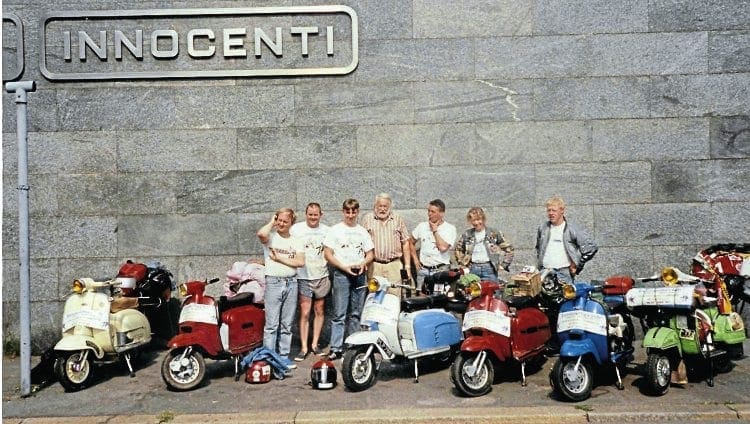
While everyone always wanted the LCGB membership to grow it would mean things in the future would have to change. More members joining would mean more administration and more organization. Gone are the days of handwritten membership cards, Jetset magazine turning up late and often with errors (due in main to the Gestetner copying machine). More significantly a change in how members’ rallies and the Euro Lambretta were run. Some would argue the basic style of club rallies back in the 1980s was more appealing than the modern organised approach of today, but that might just be rose tinted glasses. Whatever the case may be though, it would be impossible for them to go back now to how they were in the 80s, with the current size of the membership it would be impossible.
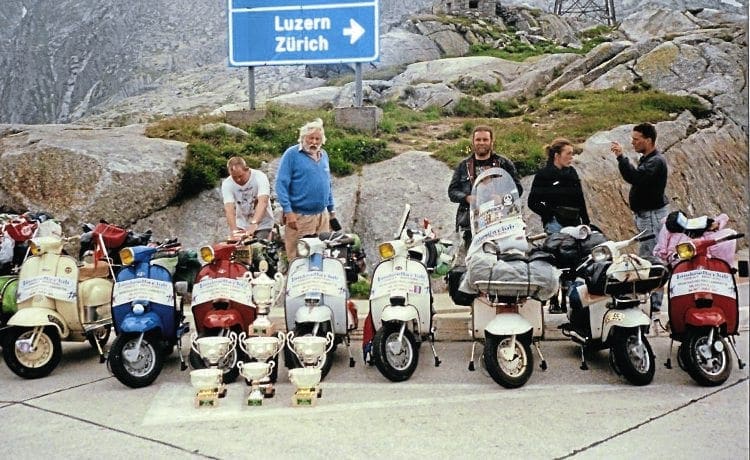
Looking back, I don’t think anyone, not for one moment, could have envisaged what lay ahead at that meeting to resurrect the LCGB back in 1977 — all the trials and tribulations that would happen over the next 25 years. Kevin Walsh, the only one to be involved throughout its entirety, has to be commended for his commitment as must all the others who served with him and the club graciously through those times. Those people, viewed by some almost as founding fathers who were dedicated to the cause, should feel proud that they kept the candle burning and shaped the LCGB into something special, so that it could become the success that it is today.
Words & photographs: Stu Owen
Many thanks to Richard Dawson and Jim Trewin for their help with this article.
This article was taken from the August 2016 edition of Scootering, back issues available here: www.classicmagazines.co.uk/issue/SCO/year/2016




